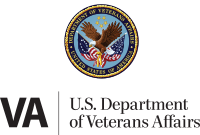Veterans Health Administration
 |
|
| Agency overview | |
|---|---|
| Formed | 1778 |
| Jurisdiction | Federal government of the United States |
| Headquarters | 810 Vermont Avenue NW., Washington, D.C., United States 38°54′03″N 77°02′05″W / 38.90083°N 77.03472°W |
| Employees | 298,546 (2015) |
| Annual budget | $65 billion USD (2015) |
| Agency executives |
|
| Parent agency | United States Department of Veterans Affairs |
| Website | www |
The Veterans Health Administration (VHA) is the component of the United States Department of Veterans Affairs (VA) led by the Under Secretary of Veterans Affairs for Health that implements the medical assistance program of the VA through the administration and operation of numerous VA Medical Centers (VAMC), Outpatient Clinics (OPC), Community Based Outpatient Clinics (CBOC), and VA Community Living Centers (VA Nursing Home) Programs.
Many evaluations have found that by most measures VHA care is equal to, and sometimes better than, care provided in the private sector, when judged by standard evidence-based guidelines.
The VHA is distinct from the U.S. Department of Defense Military Health System of which it is not a part.
The VHA division has more employees than all other elements of the VA combined.
The first Federal agency to provide medical care to veterans was the Naval Home in Philadelphia, Pennsylvania. The home was created in 1812 and was followed by the creation of Soldiers Home in 1853 and St. Elizabeth's Hospital in 1855. Congress created the National Home for Disabled Volunteer Soldiers in 1865 in response to the high number of Civil War casualties. These homes were initially intended to be room and board for disabled veterans. However, by the late 1920s, the homes were providing a level of care comparable to hospital care.
President Hoover created the Veterans Administration (VA) in 1930 to consolidate all veteran services. General Omar N. Bradley was appointed to VA administrator and Bradley appointed Major General Paul Hawley as director of VA medicine, both in 1945. Hawley successfully established a policy that affiliated new VA hospitals with medical schools. Hawley also promoted resident and teaching fellowships at VA hospitals. Ultimately, Hawley was responsible for starting the hospital-based research program at the VA. Bradley resigned in 1947. However, upon resignation, 97 hospitals were in operation and 29 new hospitals had been built. As a result, the VA health system was able to serve a much larger population of veterans than it had served in previous years.
...
Wikipedia
